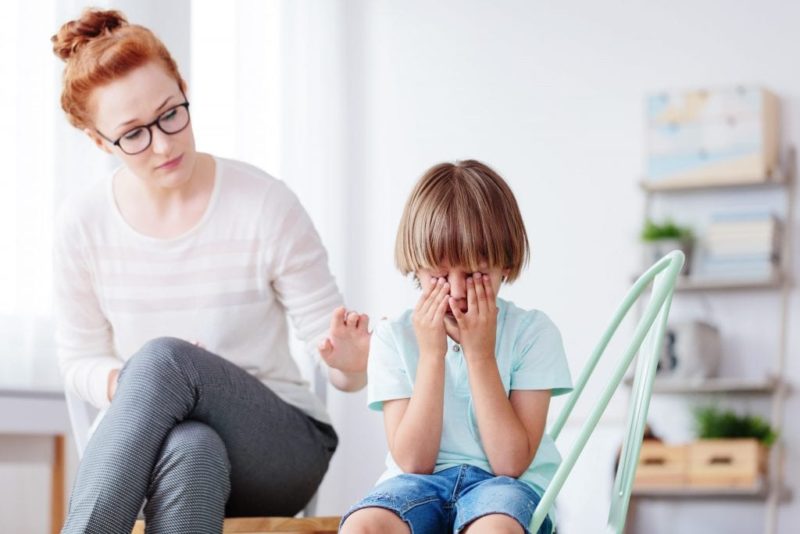If your child struggles with emotional regulation, the Zones of Regulation® can be a great tool to help them. Our team recently had the opportunity to learn from Leah M. Kuypers — who developed the Zones of Regulation®. Here, we’ve shared our learnings that you can use to help your child.
“Life is 10% what happens to us, and 90% how we react to it.”
- Charles Swindoll
As part of life, children are exposed to new events and experiences, such as their first day at school, moving house and forming new friendship groups. At times, young children may be frightened and upset by these new experiences and express their distress in a number of ways such as crying, withdrawing, or clingy behaviour.
When parents and carers respond in a caring way, including a calm tone of voice, holding, and gentle touch, children learn they can feel comfortable and safe again. They learn that others are available to help them notice and understand their feelings and behaviours to provide comfort when needed. Parents and carers act like an ‘emotional coach’ and with their help, children can learn to regulate their feelings and behaviours. This type of emotional management is called self-regulation!
Emotional and behavioural self-regulation contributes to young children’s growing independence and resilience. It is this growing ability to control their own feelings and behaviour that eventually allows a child to become more skilled in their relationships with children and adults. If we are able to recognise when we are becoming less regulated, we are able to manage our feelings and get ourselves to a healthy place. This comes naturally for some, but for others it is a skill that needs to be taught and practiced. This is the goal of The Zones of Regulation®.
What Are ‘The Zones’?
The Zones of Regulation® is a systematic, cognitive behavioural approach used to teach self-regulation by grouping our state of alertness, feelings and arousal into four coloured zones. Created by Occupational Therapist and Autism Resource Specialist, Leah Kuypers, The Zones of Regulation® framework provides children with strategies and tools to become aware and independent in controlling their emotional impulses, manage their sensory needs, and improve their overall ability to problem solve. Through incorporating the concepts of Social Thinking, the lessons on self-regulation become meaningful to our kids’ lives as they gain a deeper understanding of the impact their behaviour has on relationships.

Source: Kuypers, Leah M. (2011). The ZONES of Regulation®, San Jose, CA: Think Social Publishing Inc.
So, I’m sure by now you’re wondering what these four zones are!
Firstly we have the Red Zone. This is used to describe extremely heightened states of alertness and intense emotions. A person may be elated or experiencing anger, rage, explosive behaviour, devastation, or terror when in the Red Zone.
The Yellow Zone is also used to describe a heightened state of alertness and elevated emotions; however we have more control when we are in the Yellow Zone. A person may be experiencing stress, frustration, anxiety, excitement, silliness, or nervousness when in the Yellow Zone.
The Green Zone is used to describe a calm state of alertness. A person may be described as happy, focused, content, or ready to learn when in the Green Zone. This is the zone where optimal learning occurs.
And lastly, we have the Blue Zone. This is used to describe low states of alertness and down feelings such as when one feels sad, tired, sick, or bored.
A fun and interactive way of introducing The Zones, is by comparing them to traffic signs. When given a green light or in the Green Zone, a child is “good to go”. A yellow sign means be aware or take caution, which applies to the Yellow Zone. A red light or stop sign means stop, and when a child is the Red Zone this often is the case. The Blue Zone can be compared to the rest area signs where we go to rest or reenergise.
Practical Ways to Help Your Child
There are many strategies we use as Occupational Therapists to teach children about The Zones. This is done by exploring various types of tools, such as integrating the mind and body through the use of calming techniques, providing our muscles and joints with input to help organise our sensory system and thinking strategies. For this reason, The Zones of Regulation® allow for individualisation where kids are able to interpret and learn through techniques that are meaningful and helpful to them.
Some examples of these are:
- Children’s literature – matching characters to their corresponding Zone
- Communication boards for pre-schoolers
- Visuals for students to ‘check in’ (Download an easy self-reflection tool and visual tool to evaluate different self-regulating activities)
- The Zones of Regulation® Bingo – exposure through varying facial expressions
- Animated videos e.g. Disney movies, Sesame Street, Donald Duck & Winnie the Pooh
- The Zones of Regulation® app
- Body Scan chart
All of The Zones are natural to experience, though by utilising this framework, it teaches kids how to recognise and manage their Zone based on the environment and its demands, including the people around them.
At Occupational Therapy Helping Children, we use The Zones of Regulation® with many children who find self-regulation difficult. If you’d like to learn more about The Zones of Regulation® and how to help your child with self-regulation, please talk to your child’s OT or contact our head office. You can also bring your child to our regular Social Skills and Self-Regulation holiday groups for our primary-aged clients.



